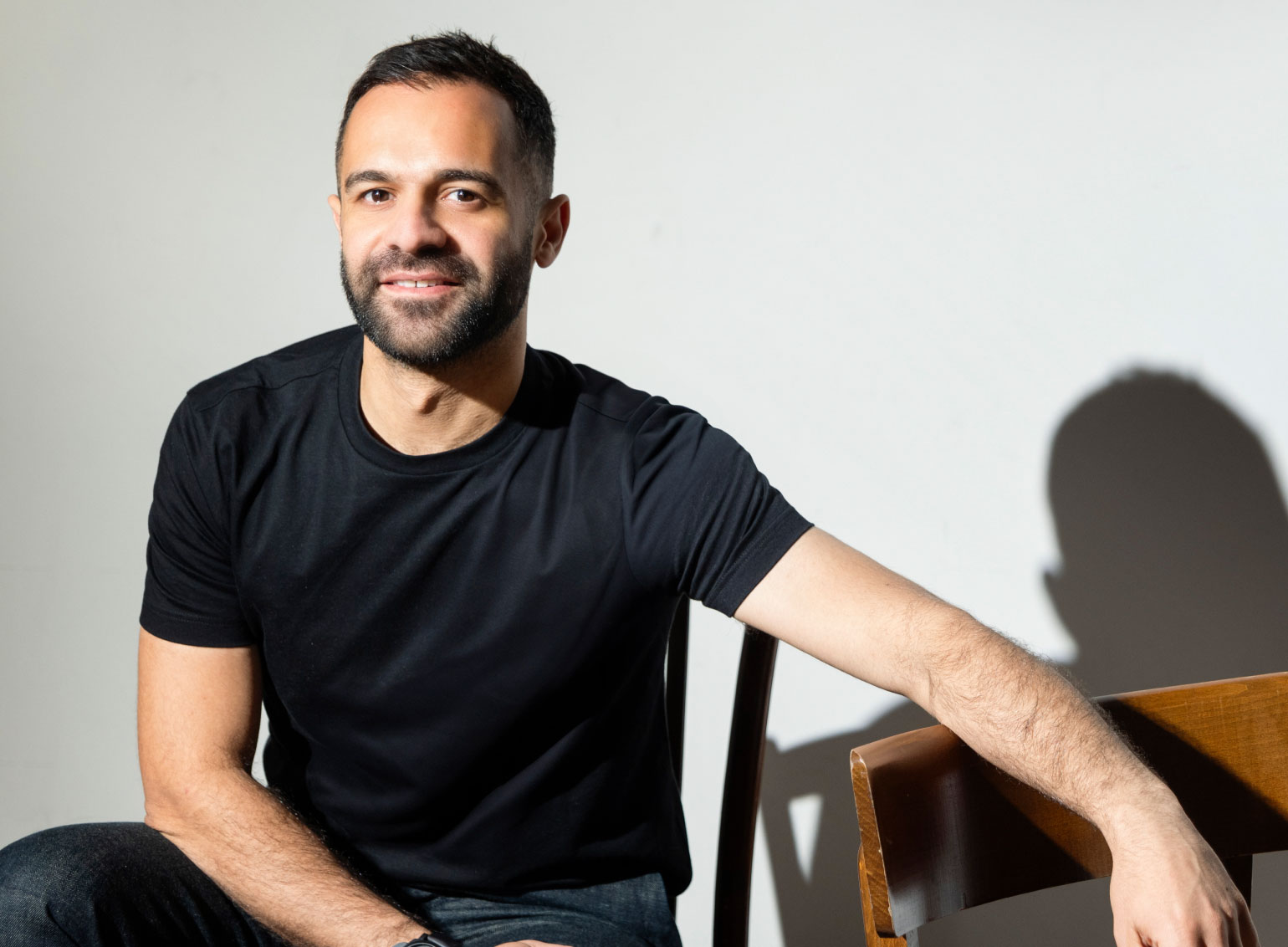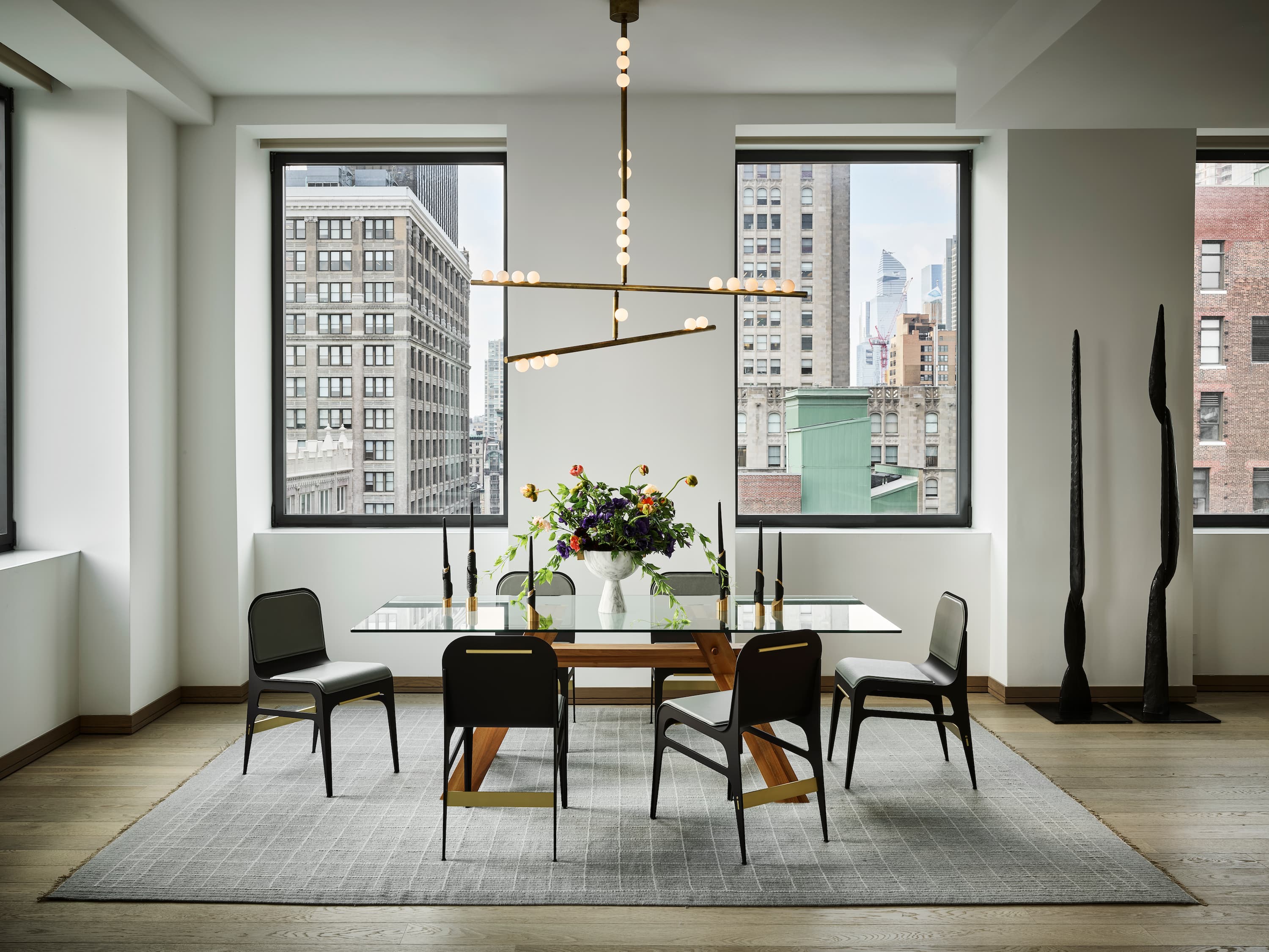Meet Ahmad AbouZanat. Originally from Palestine and spending most of his life in Lebanon, he has gone from hospitality management intern to heading up his own interior design firm in New York City. We put questions to AbouZanat to find out what led him into the world of home design, why he loves his work, and his unique and sincere insights into the industry in 2024.

Image by Eolo Perfido
What brought you to the U.S.?
After graduating from design school and being in the work field for 4 years, I got the opportunity to join a firm in Washington DC. This was a great learning experience for me as Lebanon has a different approach to construction, we work in the metric system there vs. imperial.
In 2016 I decided to move to NYC and after several unsuccessful attempts to get a job at a design firm, I decided to launch my own at the beginning of 2017. I am currently based in New York City with an outpost in Austin Texas.
Have you always been interested in a career in interior design?
In 2004 I was studying Hospitality Management and had 3 internships at that point, I realized that while I liked working in the hotel industry, it wasn’t really something I wanted to do for life. I switched gears, transferred some credits, and joined design school. It was a challenge at first as I didn’t have a portfolio of any creative work. I got admitted to the program on probation but soon enough proved myself as a creative person and someone who absorbed the technical skills right away. I graduated in 2007 and have been practicing design since.
Throughout the years, I worked as an Interior Architect, Interior Designer, Furniture and Lighting Designer, and managed several job sites. All these various positions including my school of business education helped set me up to start my own practice and be able to do what I do today.
And now as the owner of a firm, how would you describe your interior design style?
I approach the design of any new project from a functionality aspect. It is my belief that a functional space is a successful design, the aesthetics are the added layer that reflects my clients’ style and preferences. At heart, I am a minimalist with a modern approach. I like to keep things simple yet striking, attention to detail is very important to me.

Image by Douglas Friedman
How do you adapt your style to the wants and needs of your clients?
I communicate that first thing to my clients and follow up with an extensive visual survey to understand their preferred aesthetic and style. Part of our conversation about design style is about places they like to visit: hotels, restaurants, and stores. Learning where clients feel comfortable spending time is very important to me as it’s something I want to achieve in every project. The space has to reflect their style and not mine, my job is to guide and direct until we put together an intentionally well-curated space for their taste.
With so many years of experience, where do keep finding inspiration when starting a new project?
My client’s lifestyle and the architecture of the space we’re designing, in that specific order. These are two elements that give me a lot of inspiration and make each project unique to its users and location.
What do you enjoy most about your work?
Design as a problem-solving approach. I love a challenging project, one with spatial reconfiguration and working around (and sometimes with) architectural and structural elements. That’s the part of my job that excites me the most. When we arrive at solutions that clearly will enhance the way my clients use their space, there’s usually joy and gratitude. The finished product of course is always a fulfilling part of the job as well. I think in our industry it’s more challenges that we face than difficulties.

Image by Joe Kramm
And what are those challenges?
Design is a process, it takes time on our end to put together a good design for clients so patience is key. It takes time on the clients' part also to review, provide thoughtful feedback, and communicate that feedback openly - without that, as designers, we won’t be able to deliver the best work for them.
There’s also the financial investment, money is always a sensitive topic regardless of the project budget. The most difficult thing I would say is when things are out of control, delays and mess-ups unfortunately happen in almost every project. As a problem solver myself, I always try to come up and present my clients with solutions whenever I have to report a problem, I allow myself to a day or two for that. If at that time I do not have the solution, I present them with problems and explain what we have explored up until that point. It does help put the clients' minds at ease that we’re actively working towards solving a problem rather than just reporting a problem for them.
If you had to pick out one project you are particularly proud of, what would it be?
To date, my completed Grand Street project. It’s a modest one-bedroom apartment in the heart of Manhattan where space is always limited. We were able to expand the kitchen and double its size (storage and countertop space), add a bar unit, and by reconfiguring the entrance to the bedroom, the client’s closet space (hallway + bedroom) increased from 9’-5” linear ft total to a fully accessible and functional 31’ linear ft. The homeowners are a young and fun couple with an interest in fashion, music, and sports, and their apartment not only functions exactly the way they wanted it to but also reflects their personalities.
Focusing more generally on the interior design industry itself, what would you say is the biggest change you’ve seen over the years?
Engineered surfaces are definitely on the rise for all different reasons, the most important of which is the sustainability aspect of these products whether how they are produced or what they’re made of. There’s a general awareness now to source more sustainable materials, and products that are ethically sourced and produced which impact the clients’ needs as well. A healthier living environment is a priority now, few clients want to follow trends and more and more homeowners are looking to create a healthy and joyful environment for their families.
What are some of your favorite design features?
That’s a tough one to answer, I guess if I want to narrow it down I would say the first thing is lighting for me. I love lighting design and its impact on the spaces we do. I love to see how lighting design evolved and changed over the years and the possibilities the advancement of technology opens up. I’m a big fan of lighting fixtures from the 1930s.
Another design feature I’m a fan of and haven’t had the opportunity to implement properly and fully in my projects yet is door frames and window frames design. I look at the houses in Europe from the early 1900s to 1950s and I’m in awe of how door frames are not just an afterthought and often could be the feature that sets the tone of the project. Think of the Palazzos of Venice and the Milanese Houses of the 30s and 40s.

Image by David Mitchel
And finally, with such vast experience, if someone were to come to you for advice about becoming an interior designer, what would you say to them?
Be open to change and constantly evolving. It’s an ever-changing industry and it’s very exciting. If you’re starting your own design business, remember that it is a business and that takes a lot to make it successful and keep it going. Obviously, the creative part of it is very rewarding but it has to succeed as a business for it to continue to grow.
Check out the latest design projects from Ahmad AbouZanat’s firm, Project AZ, here. You can also follow him on Instagram, Pinterest, and LinkedIn.
Adam Graham is a construction industry analyst at Fixr.com. He has experience writing about home construction, interior design, and real estate. He communicates with experts and journalists to make sure we provide the most up-to-date and fact-checked information. He has been featured in publications such as Better Homes and Gardens, and written for various outlets including the National Association of Realtors, and Insurance News Net Magazine.
